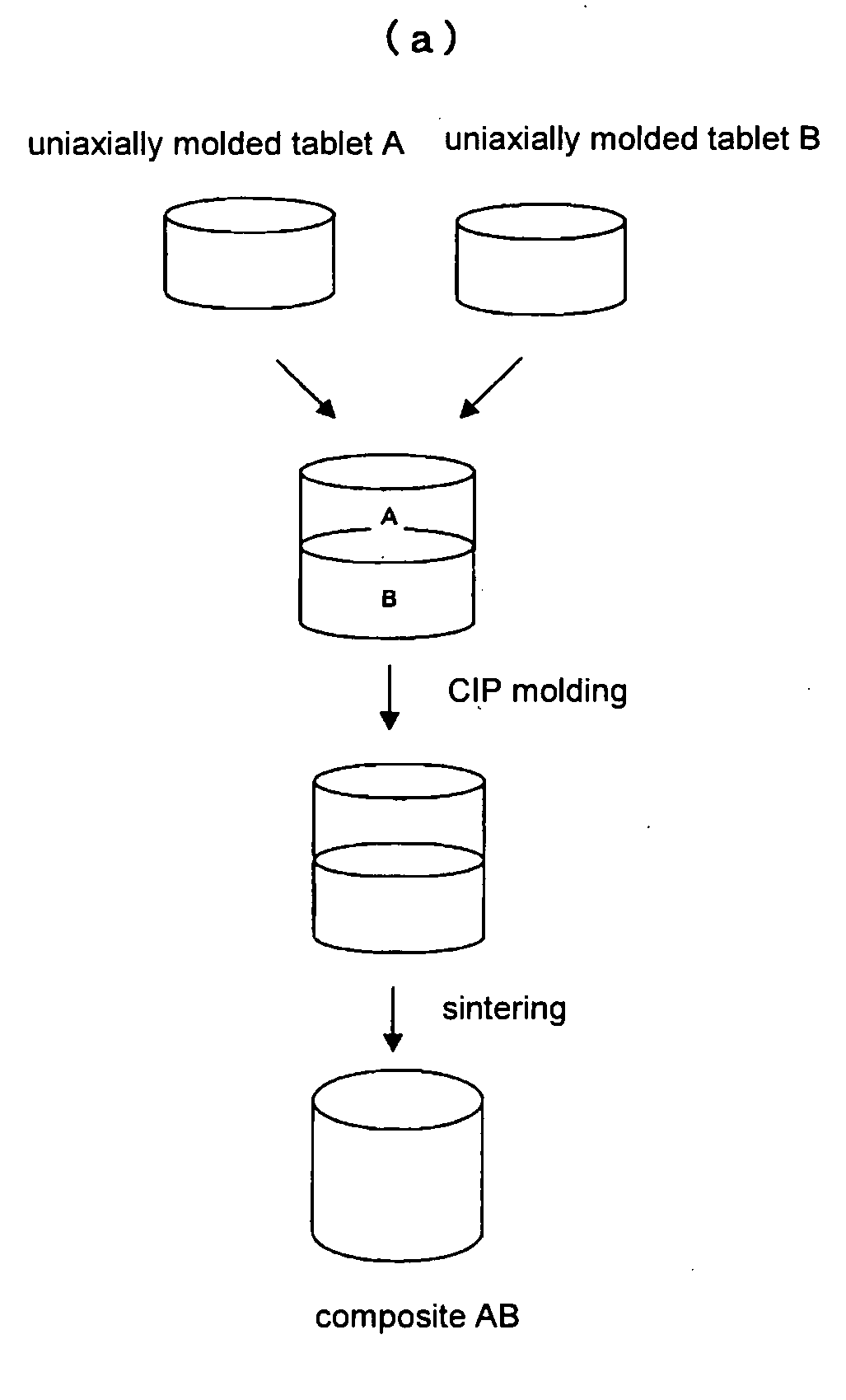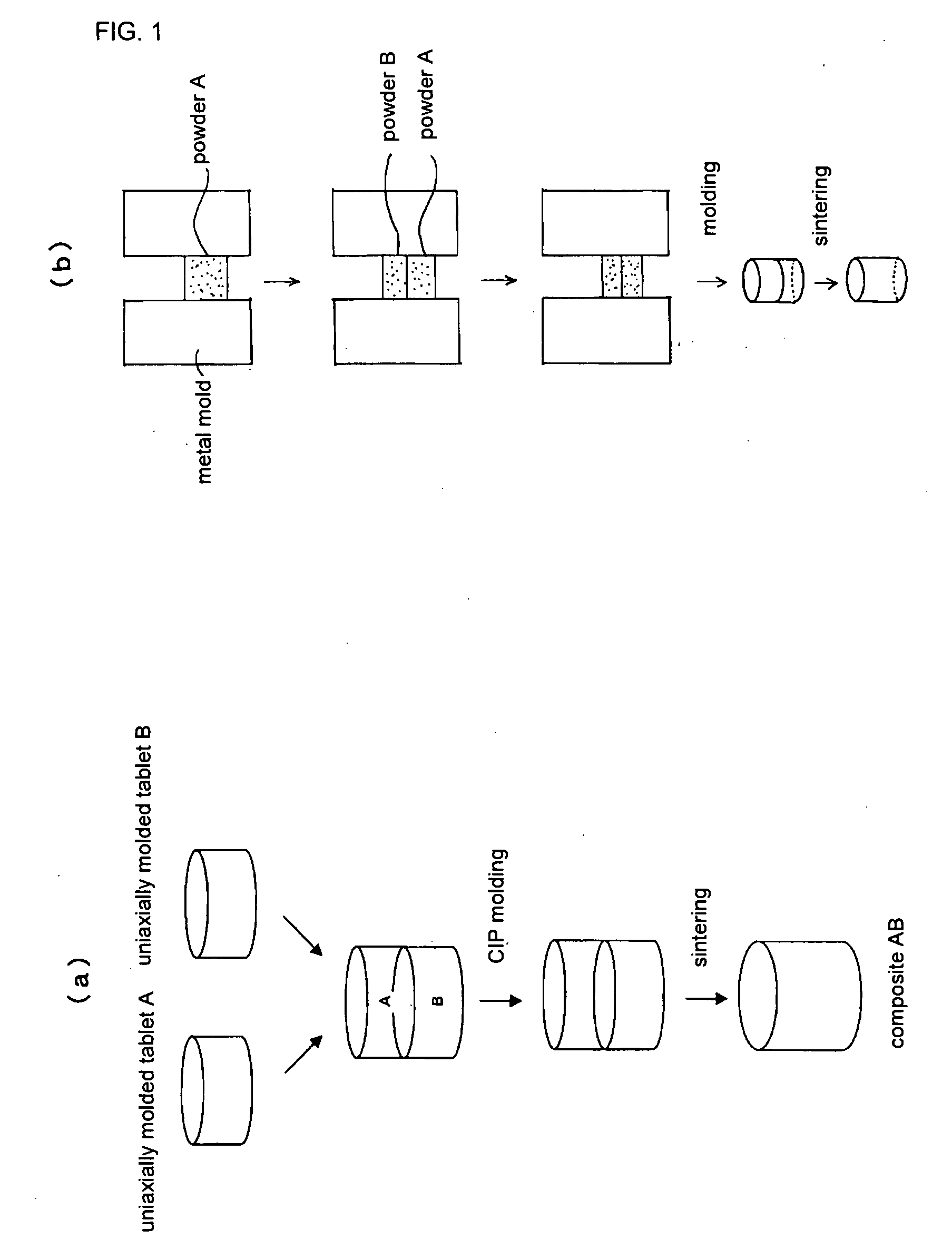Composite Laser Element and Laser Oscillator Employing It
a laser oscillator and composite technology, applied in the direction of active medium materials, crystal growth process, polycrystalline material growth, etc., can solve the problems of inability to produce perfect crystal orientation between yag single crystals and yag single crystals, difficult to form and inability to manufacture clad core type of composite laser elements. , to achieve the effect of improving the bonding state, reducing the cost of manufacturing, and high thermal conductivity
- Summary
- Abstract
- Description
- Claims
- Application Information
AI Technical Summary
Benefits of technology
Problems solved by technology
Method used
Image
Examples
examples
[0166]Examples and comparative example will now be given to further clarify the features of the present invention, but the scope of the present invention is not limited to or by these examples.
examples 1 to 9
[0167]Composite laser elements having the structure shown in FIG. 5 were produced. The specific structure is shown in Table 1.
[0168]The clad core structure was such that the inner peripheral face of the core and the outer peripheral face of the clad were given a mirror finish in the machining of the core and clad, and the clearance between the two was adjusted to about 50 μm. When the clad was platinum, though, the outer peripheral face of the core was not mirror-polished, and was roughened to about #200.
[0169]The core was put into the clad, this assembly was put into a platinum or molybdenum capsule, and the material were joined by HIP at a temperature of 400 to 1600° C. and a pressure of 100 to 2000 kg / cm2. After this HIP treatment, the product was heat treated as necessary to increase the bonding strength. Both end faces of the composite laser element thus obtained were optically polished, and 1) the output characteristics when the laser was oscillated (threshold value (W) / slope ...
example 12
[0184]A super-high-output pulse laser oscillator was produced using the composite laser element obtained in Example 11.
[0185]As shown in FIG. 12, when a small switched laser oscillator featuring the composite laser element of Nd:YAG polycrystal and Cr4+:YAG single crystal of Example 11 was amplified with a commercially available regenerative amplifier, the laser was amplified up to a pulse width of 20 nsec and an output of 500 mJ.
[0186]Furthermore, as shown in FIG. 12, to this was added an amplifier (excited by semiconductor laser) in which a composite disk laser element, comprising a 1 mm YAG polycrystal (this may be a single crystal if the oscillation medium is a polycrystal) disposed on both sides of a Nd:YAG single crystal (or Nd:YAG polycrystal) with a diameter of 30 mm and a thickness of 4 mm or a 1.5 at % Nd:YAG polycrystal with a diameter of 30 mm and a thickness of 5 mm, was set up to Brewster's angle, which increased by output to 6 J. A super-high-output (6 J) having a sin...
PUM
| Property | Measurement | Unit |
|---|---|---|
| temperature | aaaaa | aaaaa |
| surface roughness Ra | aaaaa | aaaaa |
| pressure | aaaaa | aaaaa |
Abstract
Description
Claims
Application Information
 Login to View More
Login to View More - R&D
- Intellectual Property
- Life Sciences
- Materials
- Tech Scout
- Unparalleled Data Quality
- Higher Quality Content
- 60% Fewer Hallucinations
Browse by: Latest US Patents, China's latest patents, Technical Efficacy Thesaurus, Application Domain, Technology Topic, Popular Technical Reports.
© 2025 PatSnap. All rights reserved.Legal|Privacy policy|Modern Slavery Act Transparency Statement|Sitemap|About US| Contact US: help@patsnap.com



